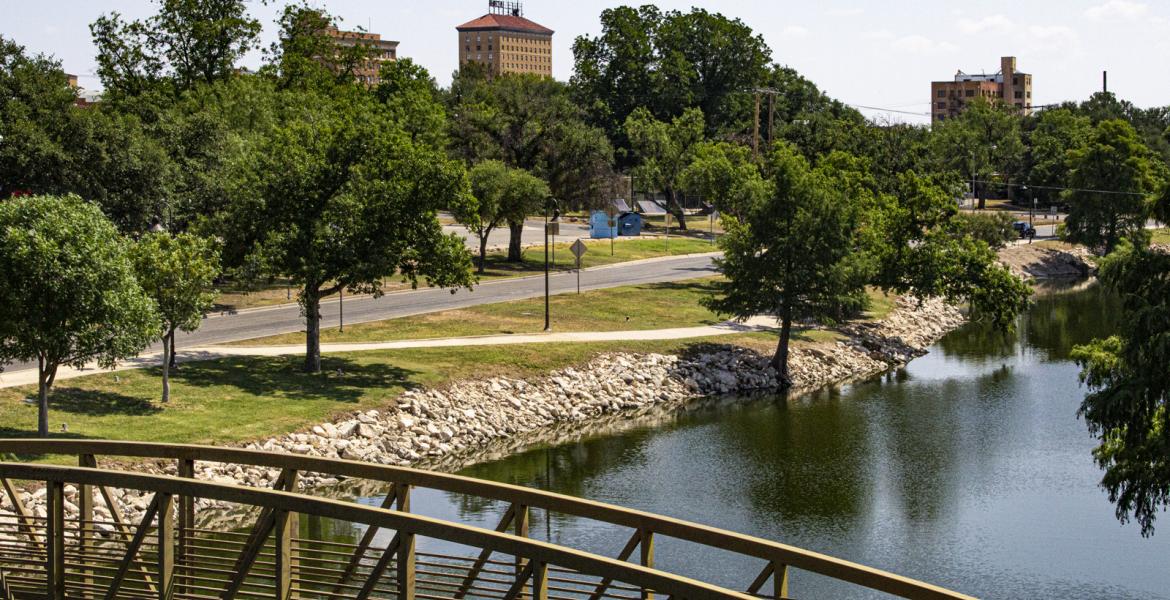SAN ANTONIO— New conservation protections are being added in Comal County thanks to the combined efforts of the Natural Resources Conservation Service (NRCS), The Nature Conservancy (TNC), and Texas Parks and Wildlife Department (TPWD) to safeguard Honey Creek Spring Ranch from future development.
Along with a significant bargain sale from the landowners, the Honey Creek Spring Ranch project was funded by the Texas Farm and Ranch Lands Council in 2019 and is one of the most recent properties benefiting from the protections of TPWD’s Farm and Ranch Lands Conservation Program (TFRLCP) and NRCS’s Agricultural Conservation Easement Program (ACEP). TNC worked with the landowners to apply for this funding and complete the transaction.
“The Agriculture Conservation Easement Program (ACEP) is a valuable tool to protect the agricultural use and conservation values of the land,” said Kristy Oates, NRCS state conservationist for Texas. “Some of the many benefits of ACEP include keeping agricultural land in the family, protecting our nation’s best agricultural soils or grasslands, preserving wildlife habitat and protecting biodiversity while sequestering carbon and reducing greenhouse gases. This program helps keep working lands working, especially in areas experiencing development pressure.”
The newly conserved Honey Creek Spring Ranch builds on a history of collaborative conservation efforts in the region. In 1981, TNC acquired 1,825 acres in Comal County, which were transferred in 1985 to TPWD to create the 2,294-acre Honey Creek State Natural Area. This easement at Honey Creek Spring Ranch, which will remain privately owned and managed, now adds an additional 621 acres to these protected lands.
“Honey Creek Spring Ranch is home to critical wildlife species and unspoiled ecological features which are quickly disappearing from Texas. Six generations of my family have called this special place home,” said co-landowner Joyce Moore. “And after 150 years, our stewardship efforts have always included leaving the land in a healthier state. With rampant development now occurring throughout the area, it is even more critical for my family to continue this legacy of conservation into the future.”
Owned and operated by Moore’s family since its inception in 1871, Honey Creek Spring Ranch has long served as a site of ecological importance. The property is home to endangered golden-cheeked warblers and to black-capped vireos and a number of other species in decline. Honey Creek Cave, the largest cave system in Texas, runs underneath the property—with several miles of underground river emerging from the ranch’s namesake spring as the primary source of Honey Creek, an important tributary of the Guadalupe River. The cave is in a drainage area for the Edwards Aquifer, which supplies drinking water to nearly two million Texans and the City of San Antonio. It contains numerous native and threatened species, including the Comal blind salamander and at least six invertebrates found in only a few caves in central Texas. While the conservation easement does not allow for public access, the property’s significant natural resources will be permanently protected from future development.
“This latest land protection win helps create a more resilient and connected Central Texas,” said Suzanne Scott, state director for TNC in Texas. “The Honey Creek Spring Ranch easement illustrates how landowners and agencies can collaborate to protect land, safeguard water, and protect native and threatened species—critical work in rapidly growing areas like ours.”
The ACEP and TFRLCP complements the work of these conservation partners to preserve natural resources by protecting working lands from fragmentation and development. The two programs maintain and enhance the ecological and agricultural productivity of these lands through Agricultural Conservation Easements. NRCS, TNC and TPWD, along with other land trusts in Texas, have partnered to preserve tens of thousands of acres of farm and ranches across Texas utilizing these programs.
“The preservation of the Honey Creek Spring Ranch is a critically important piece of the broader efforts to conserve Honey Creek and the surrounding watershed,” said Carter Smith, Executive Director of TPWD. “This property, which has been well stewarded by the landowners for many generations, is located near two of our state parks and provides essential habitat for many species living in the Texas Hill Country. The efforts put forward by the landowners and our partner agencies to conserve this and many other properties in Texas are truly a testament toward the importance of conserving our wild places for the people of Texas.”
Since the legislature created the TFRLCP in 2005, more than 27,000 acres of working lands have been protected. These properties produce $2.9 million in agricultural commodities, provided $170,000 in wildlife value, and $7.3 million in water replacement costs annually. For more information about the TFRLCP, visit the TPWD website or email [email protected]
Adding these 621 acres of Honey Creek Spring Ranch will boost connectivity and resilience for the entire region.
Subscribe to the LIVE! Daily
Required






Post a comment to this article here: